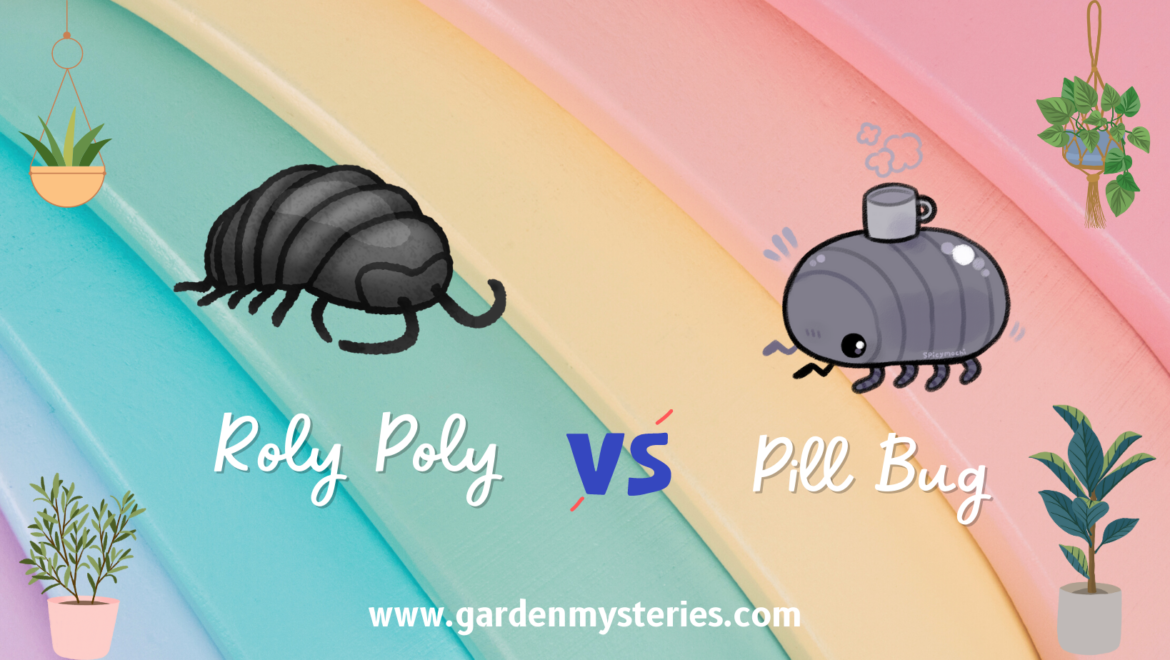Roly Poly vs pill bug -it’s a common fact of confusion, most gardeners have. However, these two are both common names used to refer to a small terrestrial crustacean, commonly found in gardens and other damp places. However, these terms may be used to refer to different species of crustaceans depending on the region.
In North America, the term pill bug is typically used to refer to a crustacean species known as Armadillidium vulgare, while the term Roly Poly is used to refer to a closely related species called Armadillidium nasatum.
Both species are known for their ability to roll up into a tight ball when threatened, which gives them their common names. They are also both important decomposers in soil ecosystems, helping to break down organic matter and cycling nutrients back into the soil.
What Is Roly Poly?

Roly Poly is a common name for a group of small, terrestrial crustaceans known as woodlice or pillbugs. They are often found in gardens and other damp environments, where they feed on decaying organic matter.
These Roly-polies have a distinctive ability to roll themselves into a tight ball when threatened, hence the name “roly-poly.” This is a defense mechanism that helps to protect them from predators. Rollie pollies bugs are harmless to humans and can be a beneficial presence in gardens, helping to break down dead plant matter and aerate the soil.
Features of Roly Poly
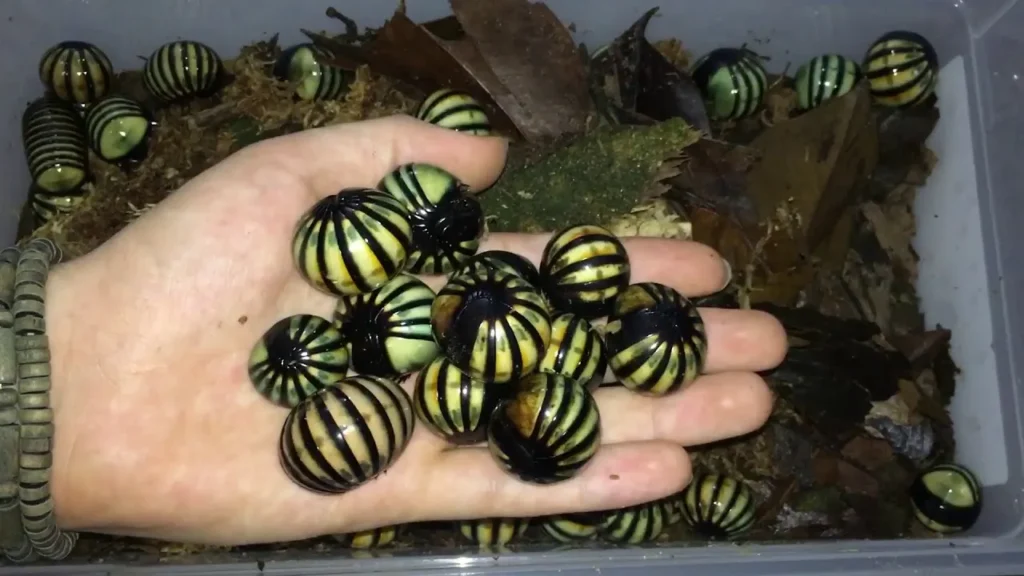
- Small Size: Roly-polies are small, typically ranging from 1/4 inch to 3/4 inch in length.
- Segmented Body: They have a segmented body that is comprised of several hard plates. They can roll into a tight ball when threatened, with their hard exoskeleton providing protection.
- Seven Pairs of Legs: Roly-polies have seven pairs of legs, with each leg ending in a small claw.
- Antennae: They have two small antennae on their heads that are used for sensing their environment.
- Moisture Dependence: Roly-polies are dependent on moisture and are typically found in damp areas of the garden. They breathe through gills and require moist environments to survive.
- Diet: Roly-polies are detritivores, meaning they feed on decaying organic matter such as dead plants, leaves, and wood.
- Beneficial for Soil: Roly-polies are beneficial for soil health, as they help to break down organic matter and improve soil aeration. They also contribute to nutrient cycling and can help to control other pest populations in the garden.
What Is Pill Bugs?
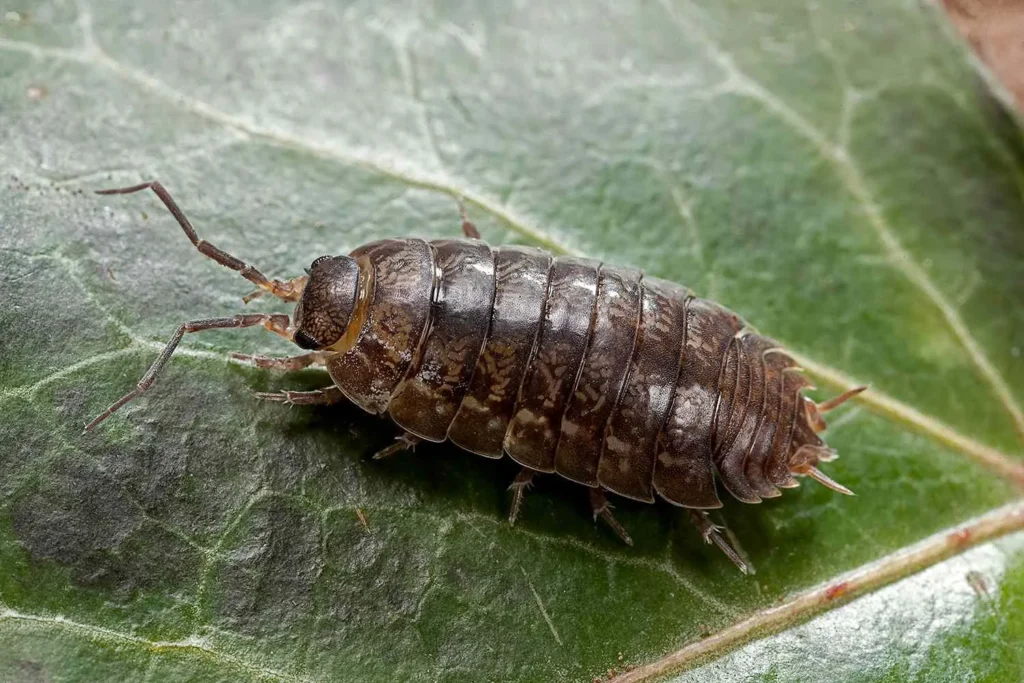
Pill bugs, also known as sow bugs or woodlice, are small, segmented terrestrial crustaceans that are commonly found in gardens and other moist environments. They are dark-colored, oval-shaped creatures with a hard exoskeleton and seven pairs of legs.
Usually, pill bugs are known for their ability to roll into a tight ball when threatened, which is why they are sometimes called “roly-polies.”
Pill bugs feed on decaying organic matter, such as dead plant material, and help to break it down, which can be beneficial to the health of a garden.
They are also important decomposers in the soil food web, contributing to nutrient cycling and the maintenance of soil structure. However, in some cases, pill bugs can become pests, feeding on the roots and stems of young plants and causing damage.
Features of Pill Bugs
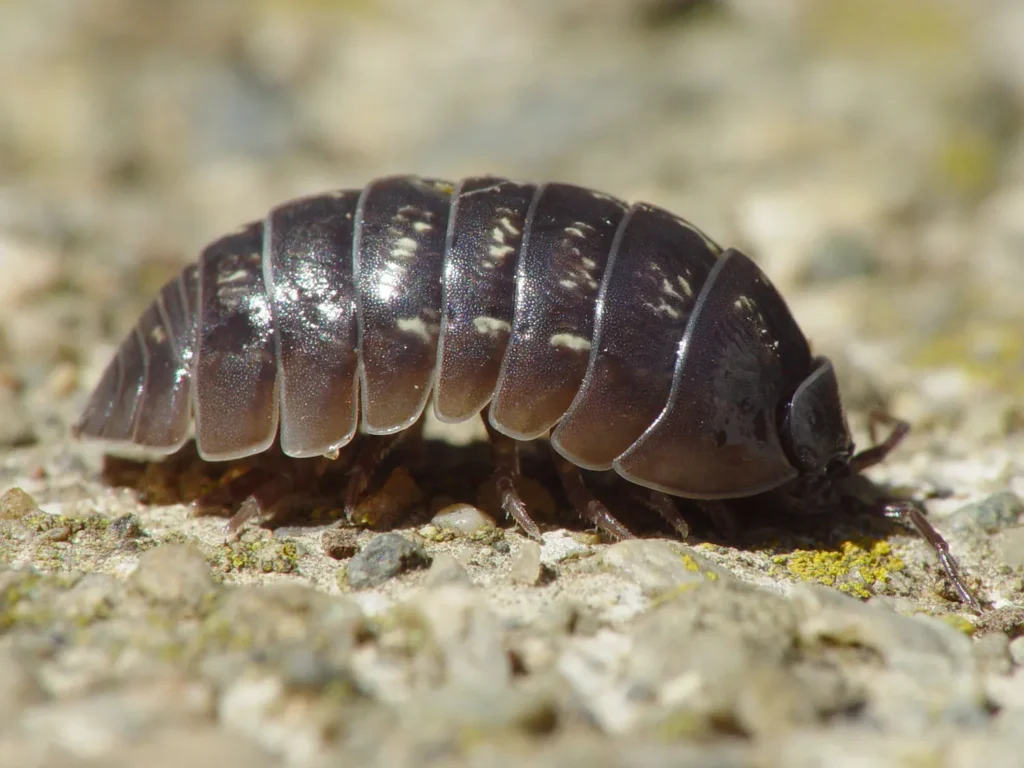
- Size: Pill bugs are typically small, measuring around 1 cm in length.
- Appearance: They have a hard, grayish exoskeleton and can roll up into a ball when disturbed.
- Diet: Pill bugs feed on decaying organic matter, such as dead leaves and other plant material.
- Habitat: They prefer moist environments and can often be found in soil, leaf litter, and under rocks and logs.
- Role in the ecosystem: Pill bugs help to break down organic matter, which aids in the decomposition process and nutrient cycling.
- Reproduction: Pill bugs lay their eggs in pouches called marsupia, and the young hatch as miniature versions of the adults.
- Behavior: Pill bugs are mainly active at night and are known for their ability to curl up into a ball when threatened. They can also release a foul-smelling odor as a defense mechanism.
Roly Poly vs Pill Bug
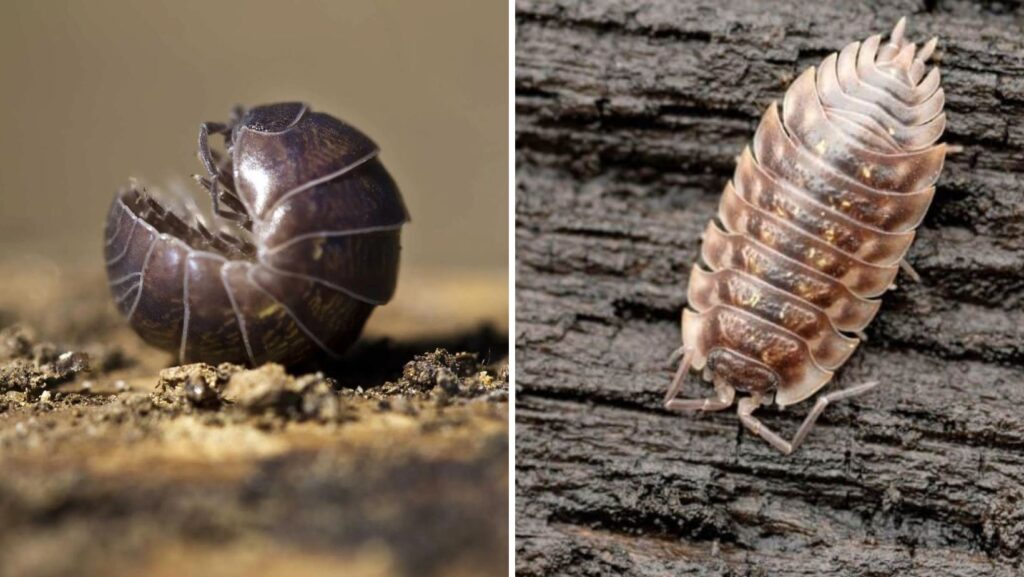
To understand the differences between roly poly vs pill bug, the following table must help you properly.
| Feature | Roly-poly (Armadillidium nasatum) | Pill bug (Armadillidium vulgare) |
| Body shape | More rounded, less elongated | More elongated, less rounded |
| Size | Slightly smaller | Slightly larger |
| Color | Grayish-blue or brownish-gray | Grayish-brown or black |
| Habitat | Damp, cool areas | Moist, dark areas |
| Diet | Decaying organic matter, plants | Decaying organic matter, plants |
| Reproduction | Can produce more eggs per brood | Produces fewer eggs per brood |
| Geographical distribution | Mainly found in eastern North America | Widespread across North America |
Benefits of having Roly-Poly and Pill Bugs in the Garden
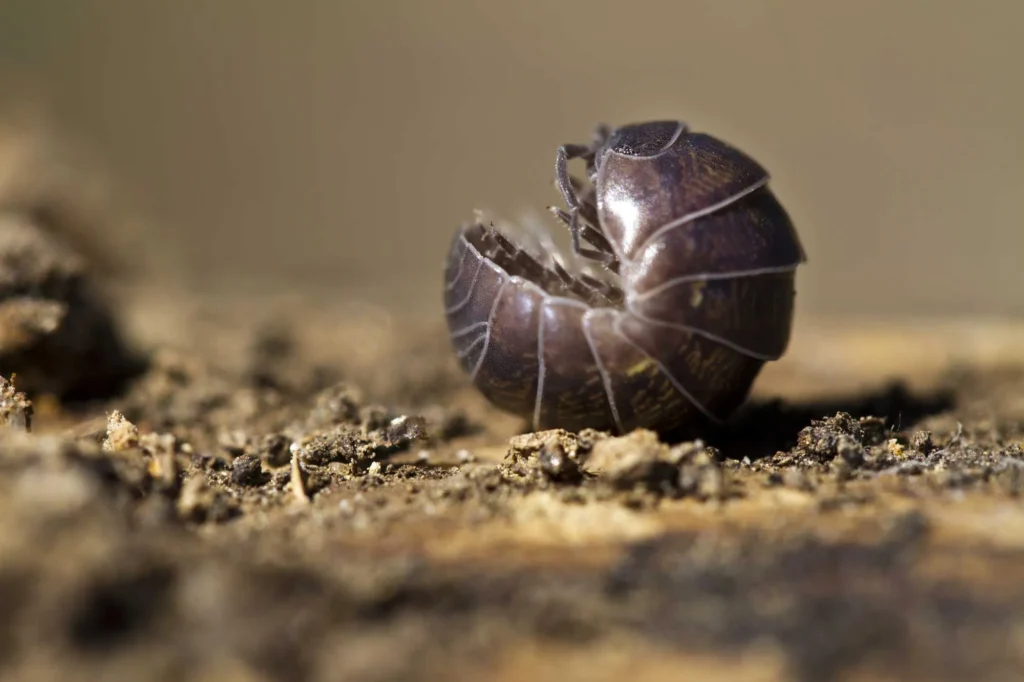
Roly Poly and pill bugs can have several benefits in the garden and ecosystem. Some of them are as the following.
1. Decomposition
Roly-poly and pill bugs are important decomposers in the soil food web. They feed on decaying organic matter, such as dead plant material, and help to break it down. This process releases nutrients into the soil, which can benefit plants and improve soil health.
Also learn: Black Kow Vs Miracle Grow
2. Soil Aeration
As they burrow through the soil, roly-poly and pill bugs help to improve soil aeration. This allows oxygen to reach the roots of plants and improves soil drainage, which can benefit plant growth.
3. Pest Control
Roly-poly and pill bugs can help to control other pest populations. They prey on other small insects and arthropods, such as mites, which can be harmful to plants.
4. Food for Wildlife
Apparently, Roly-poly and pill bugs are an important food source for many animals, including birds, reptiles, amphibians, and small mammals.
So, if you have rollie pollie bug and pill bugs a little live in your garden, no need to think much. They are good for sure.
FAQ
Q: What is the difference between roly-polies and pill bugs?
A: Roly-polies and pill bugs are two common names for the same group of crustaceans, also known as woodlice or sow bugs. They are small, segmented creatures with a hard exoskeleton and the ability to roll up into a ball when threatened. The terms “roly-poly” and “pill bug” are both used interchangeably to refer to these creatures.
Q: Where are roly-polies or pill bugs commonly found?
A: Roly-polies or pill bugs are commonly found in damp environments such as under rocks, logs, and leaf litter, as well as in gardens, fields, and forests. They are found throughout North America, Europe, and other parts of the world.
Q: What do roly-polies or pill bugs eat?
A: Roly-polies or pill bugs are decomposers and feed on decaying plant matter, fungi, and small insects. They are also known to eat their own feces to recycle nutrients.
Q: Are roly-polies or pill bugs harmful to humans?
A: Roly-polies or pill bugs are not harmful to humans and do not bite, sting, or transmit diseases. They are generally considered harmless and can be beneficial to gardens by helping to break down organic matter.
Q: Can roly-polies or pill bugs be kept as pets?
A: Roly-polies or pill bugs can be kept as pets in a terrarium or other enclosed space with a damp environment and a food source such as decaying plant matter or vegetables. They are low-maintenance pets and can be an interesting and educational addition to a household.
Wrapping Up
While roly-polies and pill bugs are often used interchangeably to refer to the same type of small, armored land-dwelling crustaceans, there are some subtle differences between the two. Roly-polies tend to curl up into a tight ball when threatened, while pill bugs are more likely to scurry away quickly.
Roly-polies also have more rounded bodies with a smooth texture, while pill bugs have flatter, segmented bodies and a rougher texture. Despite these differences, both roly-polies and pill bugs play important roles in their ecosystems, helping to break down decaying plant matter and enriching the soil with their waste.
Additionally, they can serve as a food source for other animals, such as birds, frogs, and lizards. Overall, these small crustaceans may seem insignificant, but they play an important role in the natural world and are fascinating creatures to observe and learn about. Hopefully, your confusion on Roly Poly vs pill bug has now diminished.

